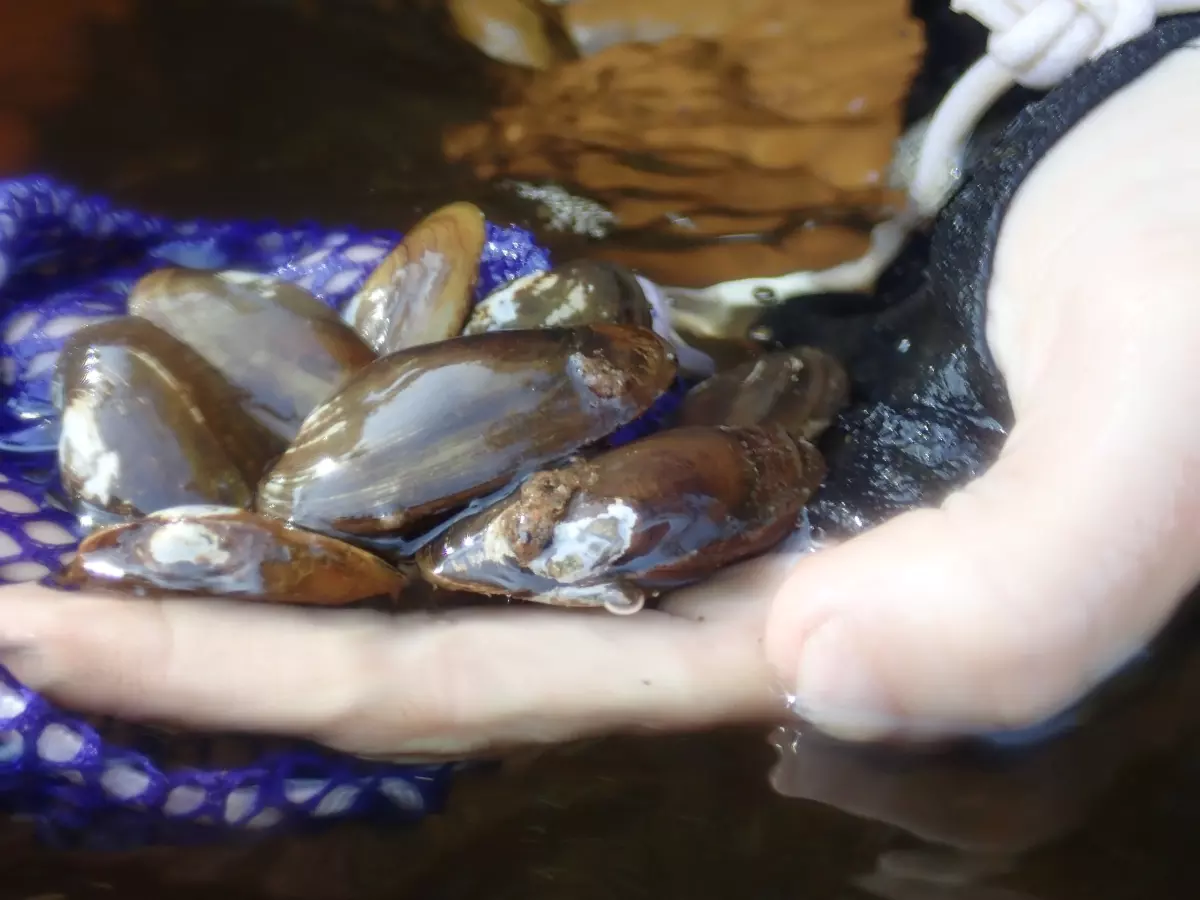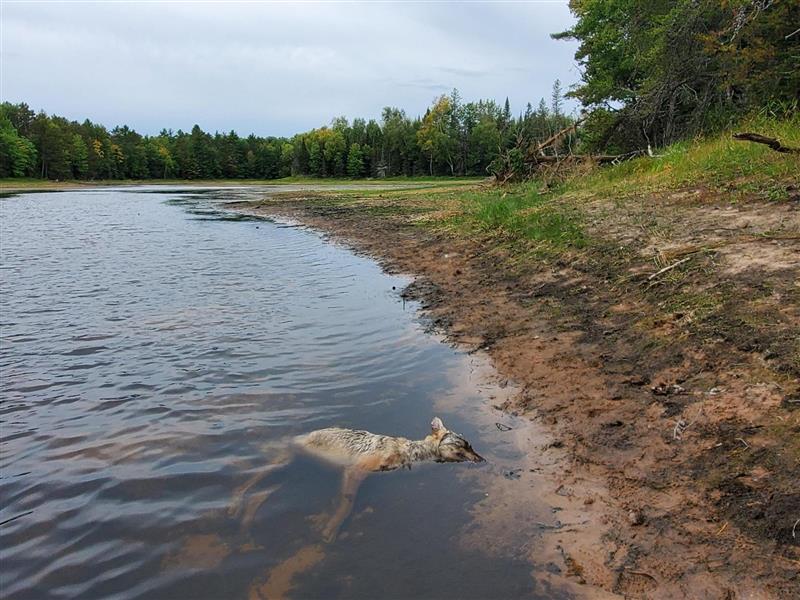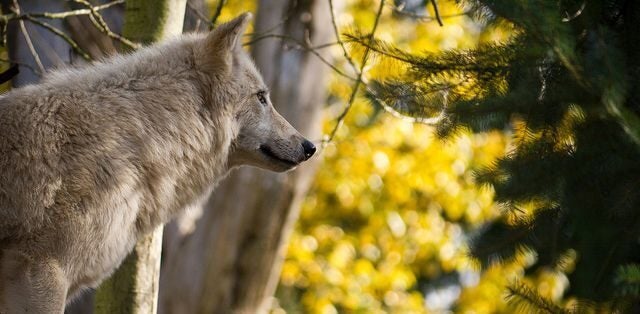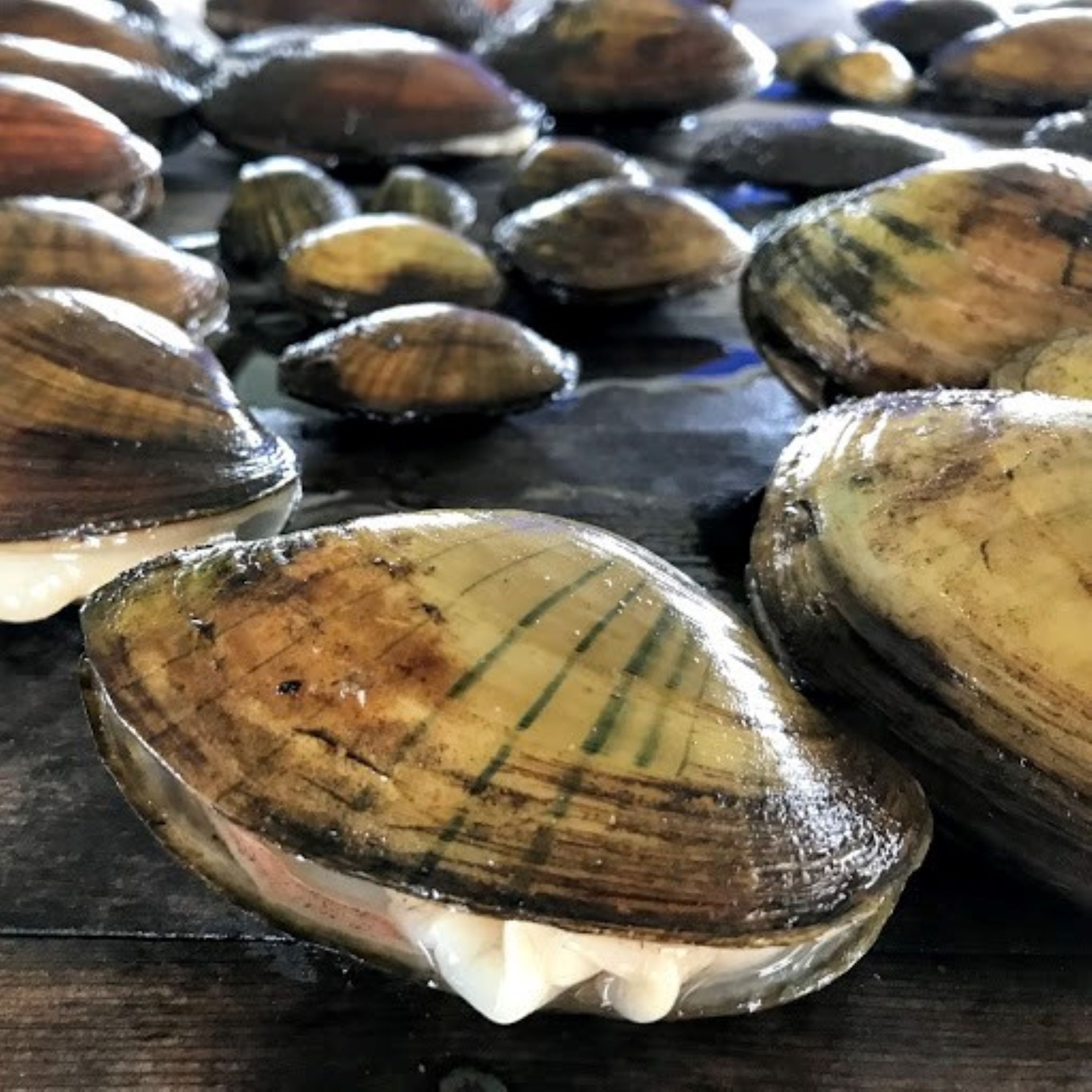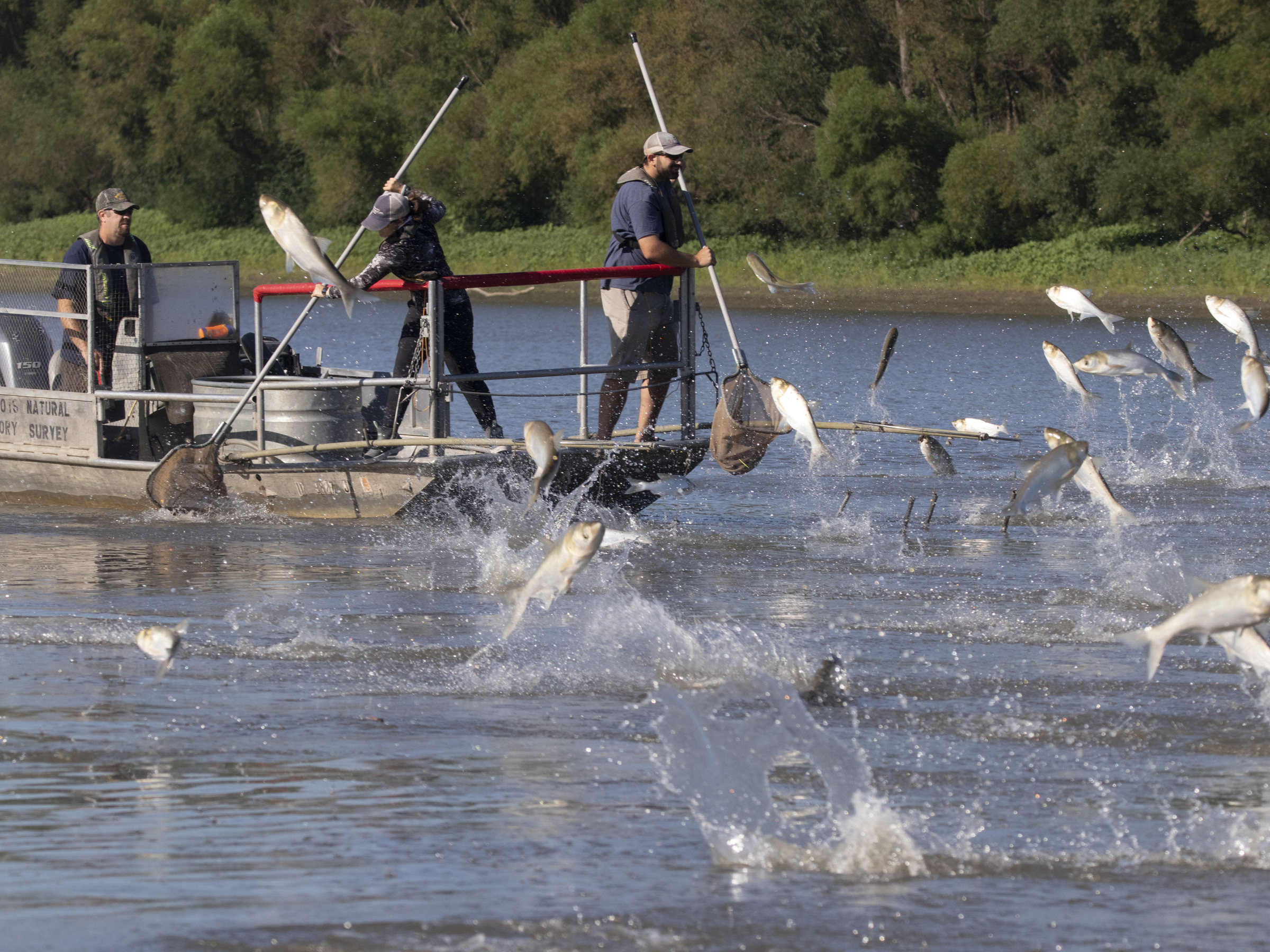Federal wildlife regulators are proposing to list the salamander mussel as an endangered species as it faces the risk of extinction due to contaminated water, changing water flows and other threats.
The U.S. Fish and Wildlife Service proposed federal protections for the freshwater mussel on Monday. The species is currently listed as threatened in Wisconsin, which is one of 14 states where populations are known to exist.
The thin-shelled mussel is about 2 inches long and makes its home in swift-flowing rivers, hiding under rocks or ledges of rock walls. It’s the only freshwater mussel in North America that relies on the mudpuppy salamander as its host to reproduce, releasing fertilized eggs into its gills.
Stay informed on the latest news
Sign up for WPR’s email newsletter.
“They get some nutrients from the salamander’s gills, and then they drop off to the river bottom and start growing to live life on their own,” said Tierra Curry, senior scientist with the Center for Biological Diversity.
The nonprofit conservation group first petitioned the agency to list the species as endangered in 2010. A spokesperson for the U.S. Fish and Wildlife Service said the delayed proposal was due in part to an extensive list of species that are under review.
The agency’s assessment of the salamander mussel found 66 out of 110 populations that historically occurred across its range are still surviving, but it noted more than 80 percent are at high risk of extinction from one or more threats. Those threats include invasive species, changing water flows from building dams, and polluted runoff from industry, construction and agriculture.
“Freshwater mussels are very sensitive. They like clean water. This particular mussel likes fast-flowing streams and clean water,” said Georgia Parnham, an agency spokesperson. “When we have a water quality issue, it most often affects aquatic species like freshwater mussels. They’re important because they can tell us whether or not there’s something wrong with the aquatic ecosystems where they’re living.”
Curry said mussels are also under threat from climate change as rising temperatures warm waters, dry up rivers during times of drought or drive extreme storms that send more runoff into waterways. About two-thirds of roughly 300 freshwater mussel species in North America are currently at risk of extinction, according to the U.S. Fish and Wildlife Service.
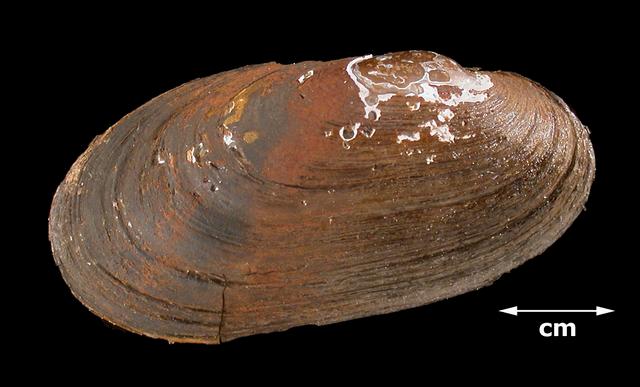
“If people enjoy fishing or swimming or kayaking or snorkeling to look at stuff, it’s important that the water has the best possible chance of not being polluted or degraded,” Curry said. “So protecting mussels helps protect water quality for people, too.”
Federal wildlife regulators plan to designate around 2,000 river miles of critical habitat for the salamander mussel, including around 400 miles in Wisconsin. The administrative cost of habitat designation isn’t expected to exceed more than $120,000 each year. Parnham added that likely wouldn’t impact the public or developers unless they’re seeking a federal permit to build a dam or similar projects.
“There’s processes for us to work through to make sure that those types of projects can go forward in a way that won’t lead to extinction of a species,” Parnham said.
In Wisconsin, the mussel has been found in rivers spanning 24 counties, including St. Croix, Eau Claire, Marathon, La Crosse, Dane and Shawano. Some of the best populations of salamander mussels in Wisconsin are found in the St. Croix River and Chippewa River, according to Lisie Kitchel, conservation biologist for the Wisconsin Department of Natural Resources.
Kitchel said the DNR recently relocated salamander mussels as part of a bridge project near Spring Green that revealed many of the freshwater critters in a sandstone ledge that was eroding.
“It took a while to find appropriate spots for them because they don’t just live out in the river like the other mussels do,” Kitchel said. “That’s why the St. Croix is such a good one because it’s such a rocky river. It has all these big rock walls that come down. The other place where we have them in Wisconsin is above the Dells.”
In recent years, the Genoa National Fish Hatchery has been trying to breed mudpuppies and extend the range of the mussel’s host species. Evidence indicates the once common amphibian is declining in Wisconsin. The hatchery is using mudpuppies to yield salamander mussels, which will eventually be relocated to the Chippewa River and other sites.
“We took them out and placed them in those rock structures in the rivers with the hope that they will survive, and they have survived the last couple of years,” Kitchel said. “But, what we don’t know is (if) there (was) some kind of pollution event that did them in the first time. The water quality is good right now, so we’re hoping that they’ll keep going and reproducing.”
People can comment on the proposed listing of the salamander mussel through Oct. 23. Parnham said it may take up to a year before the agency issues a final rule on the proposal.
Wisconsin Public Radio, © Copyright 2025, Board of Regents of the University of Wisconsin System and Wisconsin Educational Communications Board.
